Key takeaways:
- Musical dissonance, while initially uncomfortable, is essential for emotional expression and growth in music education.
- Incorporating dissonance fosters creativity and experimentation, encouraging students to break free from traditional harmony.
- Techniques such as tension-and-release frameworks and the use of silence can amplify the impact of dissonant sounds.
- Personal experiences with dissonance highlight its potential as a powerful tool for conveying complex emotions and enhancing musical expression.
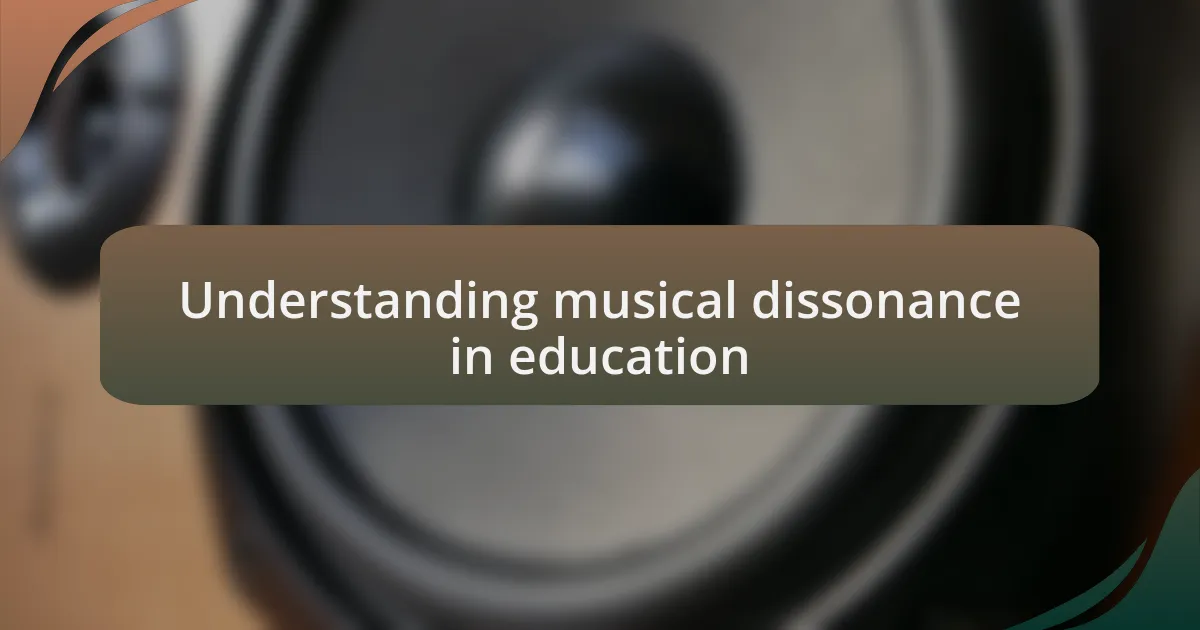
Understanding musical dissonance in education
Musical dissonance can initially feel uncomfortable, but it plays a crucial role in developing a deeper understanding of music. I remember the first time I truly grasped the power of dissonance in my own playing; it challenged me to embrace tension in my compositions. Isn’t it fascinating how that uncomfortable feeling can lead to a more profound musical expression?
In an educational setting, teaching students to recognize and engage with dissonance can enhance their listening skills and emotional awareness. For instance, when I guided a group of young musicians through a piece that prominently featured dissonant chords, I witnessed a transformation in their reactions as they learned to interpret the emotions behind those sounds. Aren’t we often surprised at how discomfort can bring about growth?
Moreover, incorporating dissonance into music education encourages creativity and experimentation. I recall a student who became excited after learning how to use dissonant intervals in their own compositions, allowing them to break free from the constraints of traditional harmony. This exploration of sound not only broadens their musical palette but also empowers them to express their unique voices—an invaluable skill in music and beyond.
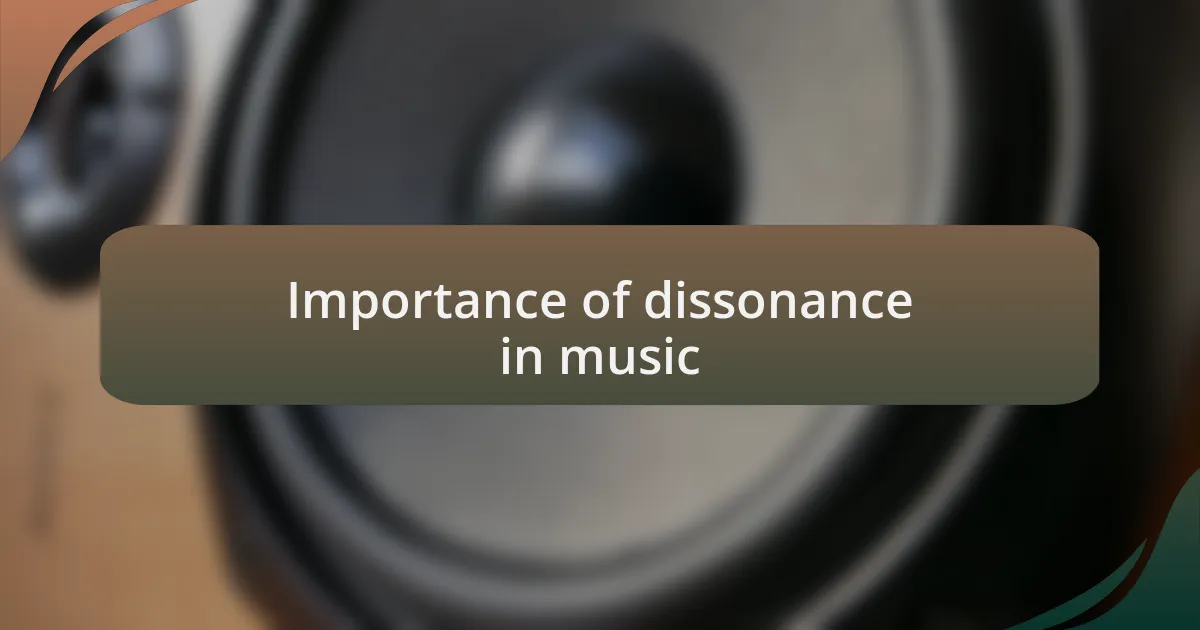
Importance of dissonance in music
Dissonance often serves as a catalyst for emotional expression in music, prompting both performers and listeners to confront their feelings. I recall performing a contemporary piece that leaned heavily on dissonance; the audience’s varied reactions were palpable. Some were visibly unsettled, while others seemed to experience a cathartic release. Isn’t it interesting how a tension-filled moment can evoke such a spectrum of emotions?
Another key aspect of dissonance is its ability to create contrast, making consonant moments more poignant and satisfying. I once worked with a composer who strategically placed dissonant chords to highlight a climactic resolution. It was remarkable to see how those unsettling moments not only enhanced the music’s emotional landscape but also kept the audience engaged. Can you imagine the power of dissonance in crafting a gripping narrative through sound?
Additionally, exploring dissonance fosters critical thinking and analytical skills among students. When I guided my music class through analyzing dissonant passages, they began to identify patterns and connections that deepened their appreciation for structure in music. It struck me how the ability to navigate dissonance could translate into broader problem-solving skills, urging students to look beyond the surface. Doesn’t that open up a world of possibilities in their musical journey?
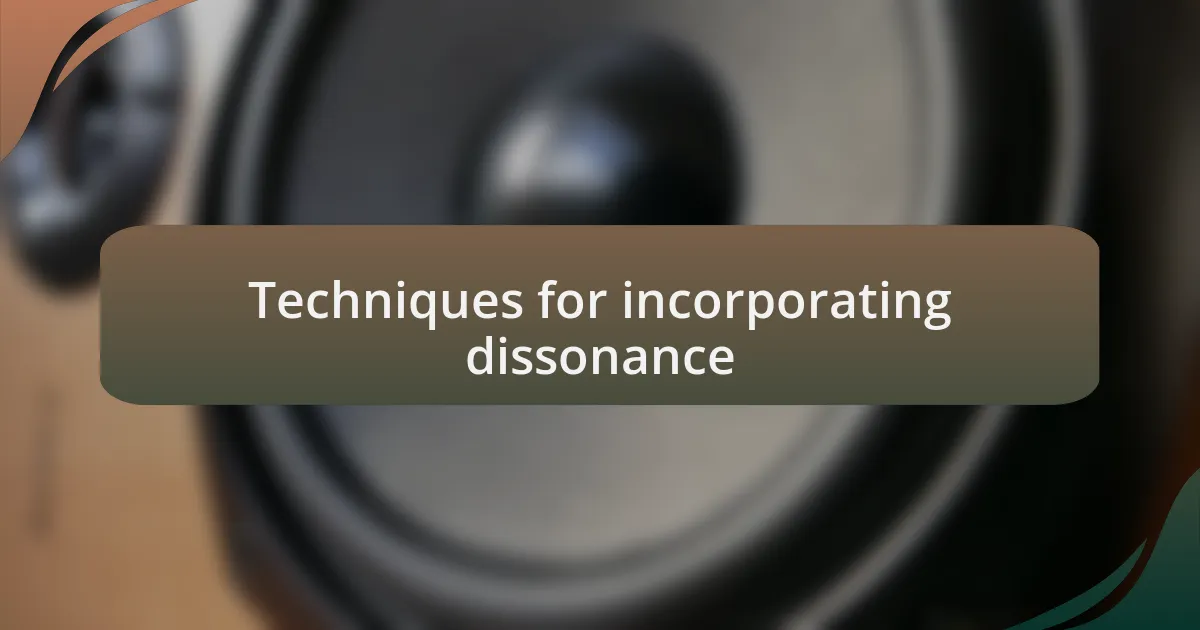
Techniques for incorporating dissonance
To effectively incorporate dissonance into compositions, one technique is to create a tension-and-release framework. I remember experimenting with this method in my own compositions; by intentionally placing dissonant chords followed by soothing consonant resolutions, the listeners were not only engaged but also kept on the edge of their seats. Have you ever noticed how that shift can almost take your breath away?
Another approach involves juxtaposing dissonance with silence. I once attended a workshop where a seasoned composer demonstrated how brief moments of silence can amplify the impact of dissonant notes. The contrast was striking, and the silence allowed the audience to truly absorb the tension before it burst into a cacophony of sound. I found myself reflecting on how often silence can speak louder than the notes themselves, don’t you agree?
Experimentation with various scales and modes can also yield unique dissonant effects. I vividly recall working with a group of students on a piece that utilized a whole-tone scale. The dissonances we uncovered were unexpected yet exhilarating, giving our work a fresh and vibrant feel. It’s fascinating to think about how stepping out of traditional scales can open doors to new musical landscapes, isn’t it?
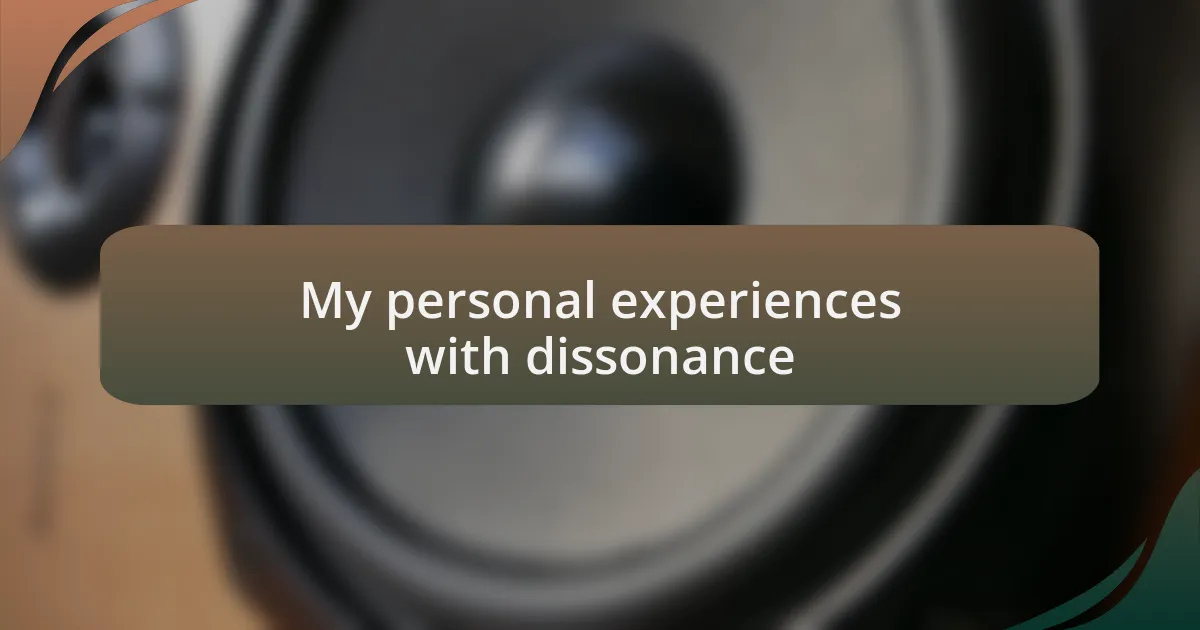
My personal experiences with dissonance
There was a moment in my early music education when I first encountered the strident clash of dissonant chords during a group performance. I remember feeling a mix of confusion and intrigue as those jarring sounds penetrated the familiar flow of our arrangement. It was almost like a musical awakening; I began to understand dissonance not just as a discordant element but as a powerful tool for emotional expression.
In my own compositions, I’ve found that dissonance often mirrors the complexities of life. I once crafted a piece where the dissonant sections aligned with my personal struggles—each unresolved note echoed my frustrations and uncertainties. When I finally resolved those tensions to harmonious phrases, it felt like a cathartic release, inviting the audience to share in that emotional journey. Have you ever felt how music can serve as an outlet for our innermost feelings?
Attending a masterclass with a renowned composer was a turning point for me as well. They shared how dissonance could convey a sense of longing or discomfort, and I was immediately inspired. After trying to integrate those lessons into a school project, I felt an exhilarating rush when the dissonant chords elicited such a visceral reaction from my peers. It made me wonder—how often do we overlook the transformative power of dissonance in music education?
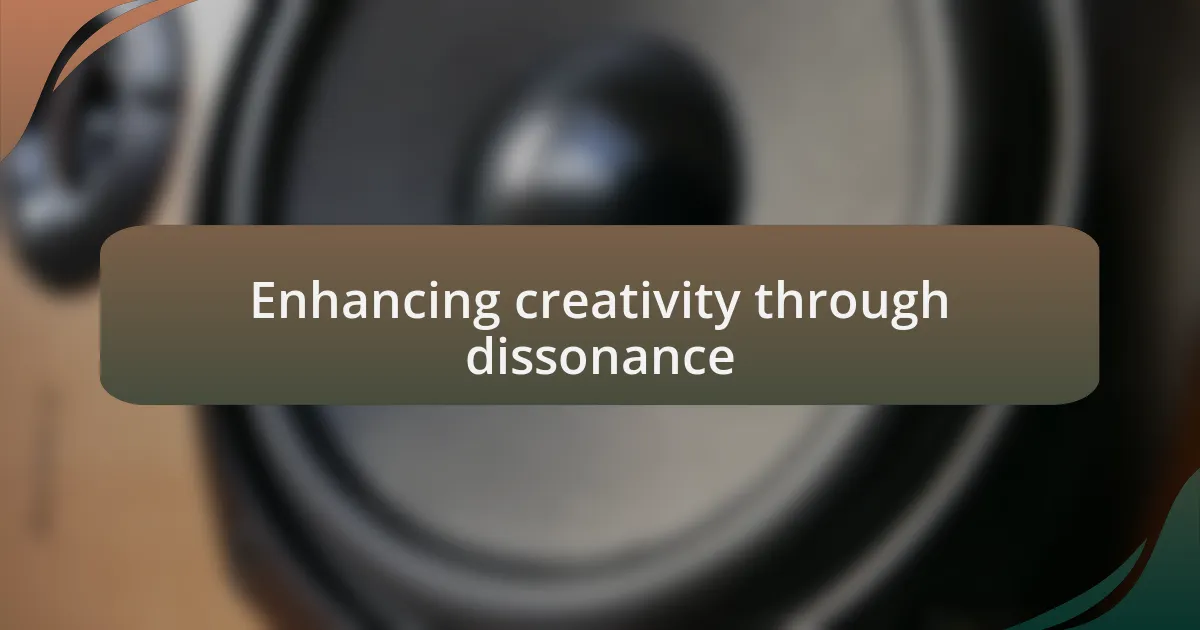
Enhancing creativity through dissonance
Dissonance can be a surprising catalyst for creativity, pushing musicians to experiment with sounds they might otherwise avoid. I recall a project where I was tasked with improvising a solo; instead of sticking to predictable melodies, I began to explore dissonant intervals. That risk not only sparked a unique composition but also transformed my approach to musical expression. How often do we play it safe when creativity thrives in the unexpected?
In my experience, incorporating dissonance into group dynamics can lead to a richer and more collaborative environment. I saw this firsthand during a workshop when a fellow student introduced dissonant chords to our harmonious chorus. Initially, we were hesitant, but as we embraced the challenge, our combined creativity soared. It prompted me to wonder: is discomfort the secret ingredient to unlocking our best artistic selves?
When I think back to my own learning journey, the moments of dissonance truly stand out. I remember a time when our instructor encouraged us to compose using dissonant harmonies as a foundation. That guidance not only shifted my perspective but also led to a series of compositions filled with raw emotion and depth. It makes me think—could dissonance be the key to unlocking deeper, more authentic musical conversations?